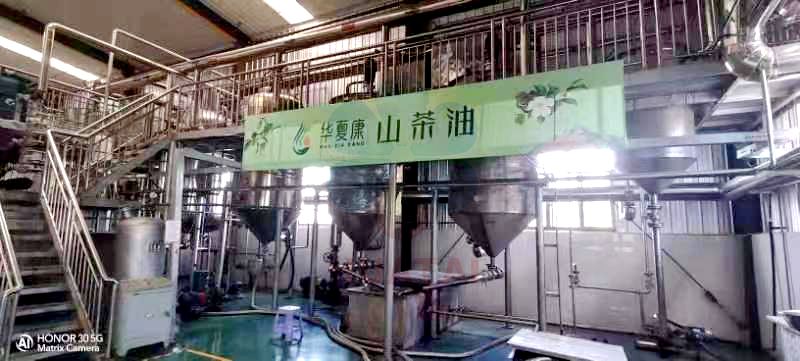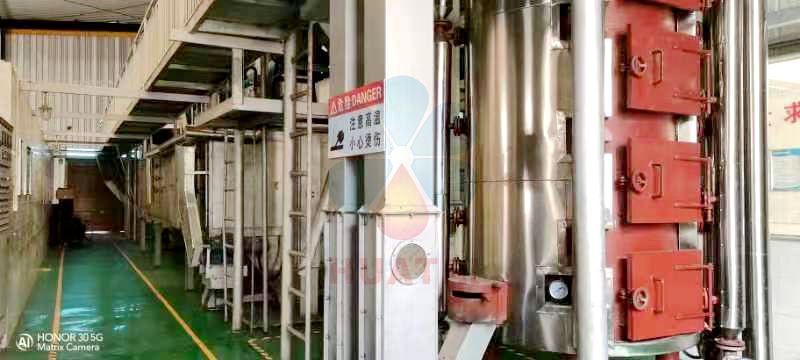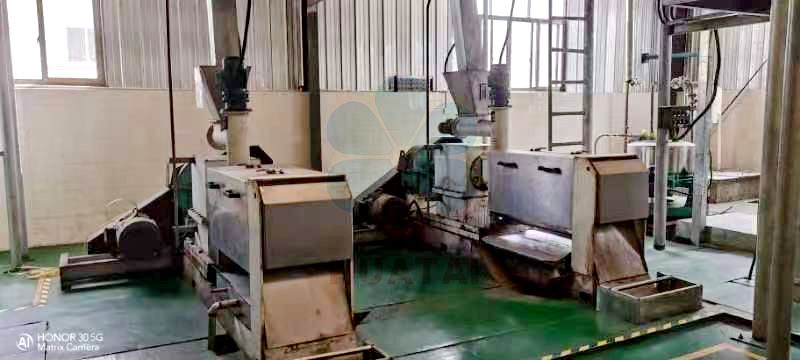How do we distinguish between extracted oil, hot-pressed oil, and cold-pressed oil in the market? How can we determine whether the selected oil is of poor quality? Next, we will explore the mysteries of these three oil extraction processes using tea seed oil as an example.
The extraction method is an efficient oil extraction process that involves soaking oilseed materials in solvent oil (usually No. 6 light gasoline), followed by high-temperature extraction to obtain extracted oil. This process requires a series of refining steps known as the "six removals," including degreasing, de-gumming, dehydration, decolorization, deodorization, and deacidification to ensure the final product’s quality and purity. Its greatest advantage lies in its high yield and low production cost, which explains why extracted oil is relatively inexpensive in the market.

Hot pressing is a traditional oil extraction process. First, the tea seeds are crushed, then steamed and cooked. After this process, the steamed tea seeds are formed into tea seed cakes. Finally, the tea seed cakes are pressed using an oil press to produce tea oil. This method is commonly seen in manual workshops and represents traditional artisanal hot pressing.
Compared to hot-pressed tea oil, cold-pressed oil has significant advantages. It avoids bacterial growth and hygiene issues associated with the steaming process, ensuring purity and safety. Additionally, cold-pressed tea oil retains its natural flavor and has higher nutritional value. However, cold pressing has lower yield and requires high-quality raw materials. These strict requirements ensure the high quality and unique taste of cold-pressed tea oil.
The cold pressing method is demanding in terms of environmental and raw material conditions, typically requiring processing at temperatures below 60°C to preserve nutrients. Notably, because cold pressing produces only half the yield of hot pressing, the price of cold-pressed tea oil is generally about 50% higher than hot-pressed tea oil.
First, tea fruits are harvested and sorted. After cleaning, de-shelling, and kernel separation, tea seeds are obtained. Then, pressing takes place in a low-temperature environment (below 60°C) to produce crude cold-pressed tea oil. After coarse and fine filtration, followed by low-temperature crystallization and low-temperature filtration, the final cold-pressed tea oil is produced, preserving the oil’s nutritional components.

1,Effectively reduces degradation reactions of fats and carbohydrates and prevents harmful substances from forming due to protein denaturation in high-temperature pressing.
2,Overcomes the deep color and burnt taste issues associated with traditional high-temperature pressing.
3,Avoids chemical contact and secondary contamination from deacidification, alkaline neutralization, and bleaching during hot pressing.
4,By skipping high-temperature distillation and deodorization, it retains the natural aroma compounds of tea oil and its environmentally friendly ingredients.
Since cold-pressed tea oil is unaltered during processing, no additives are required for long-term preservation. This ensures its high market value. Currently, cold pressing is primarily used for high-end edible oils like tea seed oil and olive oil.

Selecting the right manufacturer is crucial when purchasing a complete tea seed oil production set. A reliable manufacturer provides high-quality and cost-effective equipment, ensuring excellent performance and profitability. A recommended choice is Henan Huatai, a company with stable equipment and extensive experience, making it a trustworthy partner for users.
Huatai Oil Machinery provides good quality oil mill plant, time & fast delivery, perfect after-sale services, and reasonable price, contact us!
Website: https://www.huataioilmachine.com/Copyright @ Henan Huatai Cereals And Oils Machinery Co.,Ltd.
Contact us now